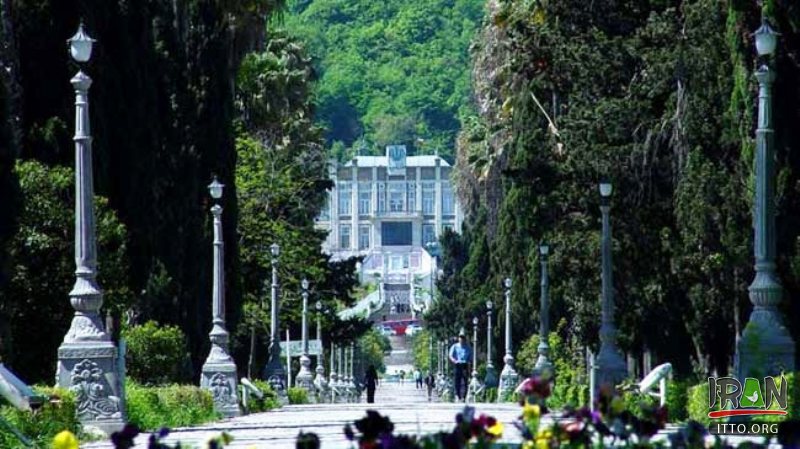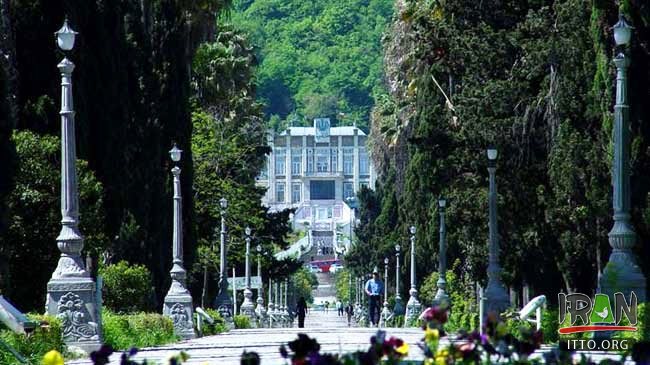One needs to explore the cultural-natural landscape of Ramsar in northern Iran to discover the richness of this city.
It is famous among the people of the country as the bride of the cities of Iran, destinationiran.com wrote.
Due to its economic, social and impressive nature, it is also an attractive city for tourism. This city is located in the westernmost part of Mazandaran Province, south of the Caspian Sea, north of Alborz Mountains, west of Tonekabon County and east of Gilan Province.
Mazandaran Province borders Gilan Province. Since Ramsar was once one of the cities of Gilan Province, the local inhabitants of the city speak Gilaki language.
The city is warm and humid in the summer and mild in the winter. The maximum annual humidity in the city is 90 percent. The best season to travel to Ramsar is spring and summer, because in the fall and winter snow and rain will reduce the pleasure of the journey.
The most striking urban area in this Caspian city is the main boulevard called Moallem which connects to downtown Ramsar. The boulevard has a special beautiful landscape that is worth the walk from the sea to the end.
Ramsar hot springs:
In this city, there are natural springs containing sulfur. The water of the springs is carbonated and, from the perspective of traditional Iranian medicine, it has a therapeutic effect. Many travelers visit Ramsar to benefit from the traditional medicine feature of the spa.
Ramsar gondola lift:
The city’s gondola lift offers an extensive view of nature by passing over a lush natural forest that covers the mountains. The gondola lift passes a distance covering two kilometers, extending from the coast of the Caspian Sea to the high mountain peaks. On this gondola lift, you will fly over the city.
Javaher Deh village:
Javaher Deh is one of the most beautiful villages in Ramsar. Local people called it Joor Deh in the past that means ‘the village high up’.
The winding road leading to Javaher Deh has unique natural scenery and provides memorable and unforgettable travel moments. It is better to plan for a trip to Javaher Deh in the spring and summer because, in late autumn and winter, the road leading to the village is snowy and has unstable weather condition.
Additionally, at a height of two thousand meters above the sea level, Javaher Deh faces the mountains on three sides. It is interesting to mention that a part of the battle of Mirzakuchak Khan, an Iranian revolutionary, and nationalist of Gilan Province, with government forces took place in this village. That is why Javaher Deh is famous in history.
Ramsar Palace Museum:
The Ramsar Palace Museum is located in a building called Marmar (meaning marble) Palace. Local people call it ‘Tamashagah-e Khazar’ that means ‘Caspian Museum’.
The museum, built by deposed Pahlavi ruler Reza Shah as his summer residence, is located in the middle of a 30-hectare garden. Its architectural style is eclectic, a combination of Iranian and European architecture. The eclectic architecture of the era was very popular among architects because the styles of Western architecture influenced that of Iran.
On the other hand, when one enters the palace in the 30-hectare garden, a high ceiling with glamorous stuccos, and decorated with white color, will draw your attention.
Four stone pillars support this giant roof. Tiger reliefs and some bronze and marble statues decorate the pillars.
In Ramsar Palace Museum, one can see the mesmerizing objects such as old paintings, expensive Iranian handmade rugs, charming crystal-made vessels, and artistic wood carvings.
Ramsar historical hotel:
Ramsar hotel building is linked to the Caspian Sea by a two-kilometer boulevard. It located between the forest and the sea, with a classic Iranian architecture.
The rooms are also available in two types:
● Sea-view rooms
● Forest-view rooms
The Cultural Heritage, Handicrafts and Tourism Organization Iran registered Ramsar Hotel on the National Heritage List for historical reasons. This four-star hotel offers rooms in both the old building (dating back to 1933) and the new one (1967).
As the cultural and natural attractions are located in the city center, it is easily accessible to visitors.
When one enters the main boulevard leading to the Ramsar Hotel, one will notice a symmetrical view of nature and beauty, as if you are viewing a photo of a professional photographer.
Why you should travel to Ramsar:
Visiting the cultural-natural landscape of Ramsar and its beauty can be an opportunity to be acquainted with the history and nature of the northern Iranian coast. The location of Ramsar and its attractions such as shopping malls, restaurants, and entertainment, attract many domestic and foreign tourists.
If you desire to see another face of Iran different from the center of this country and experience a different culture in Iran, we suggest you visit Ramsar and its natural and cultural landscape.



